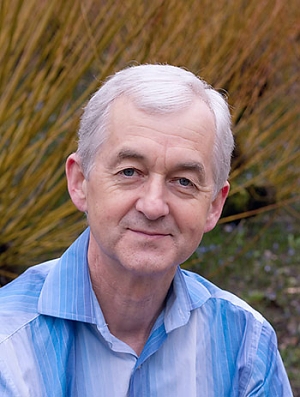Tamás Freund, Director of the Institute of Experimental Medicine in Budapest, HungaryGyörgy Buzsáki, Board of Governors Professor at the Center for Molecular and Behavioral Neuroscience, Rutgers University, Newark, New Jersey, USA
The Grete Lundbeck European Brain Research Foundation announced today, the 4th March, in Copenhagen, Denmark that The Brain Prize 2011is jointly awarded to these three Hungarian born scientists 'for their wide-ranging, technically and conceptually brilliant research on the functional organization of neuronal circuits in the cerebral cortex, especially in the hippocampus, a region that is crucial for certain forms of memory'. The three scientists, who from their current locations in Europe (Freund, Somogyi) and the USA (Buzsaki) share an interest in the ways in which circuits of nerve cells process information in the brain. They have worked together at Budapest, Oxford and Rutgers University, New Jersey, and had great influence on each other reflected in many joint publications. Peter Somogyi was Tamás Freund's PhD supervisor and they laid the foundations to the MRC Anatomical Neuropharmacology Unit at Oxford, under the supervision of A. David Smith, (Emeritus Professor of Pharmacology at Oxford and Unit Honorary Associate Director), who set up the Unit which Somogyi now directs.
Although the work of these researchers has been aimed at fundamental understanding of brain function, it illuminates the causes and symptoms of a variety of clinical conditions, from epilepsy and Parkinson's disease to anxiety and dementia. It has set the gold standard for correlating structure and function, from molecules to behaviour.
Professor Colin Blakemore, Chairman of the Selection Committee said:"In order to know how the brain processes information we need a complete description of the structure of nerve cells and the dynamic characteristics of the connections between them. The work of Péter Somogyi, Tamás Freund and György Buzsáki has provided much of this essential knowledge for the cerebral cortex. Without such painstaking research there will never be full understanding of the brain."
Sir John Savill, chief executive of the Medical Research Council said:"Professor Somogyi's fundamental and pioneering work on the chemical identification of neuronal types and localization of signalling molecules in identified microcircuits is a key pillar of modern day neuroscience. I'm delighted his huge contribution to the field has been recognised. Strategic, long-term investment in basic science is essential if we are to fully understand the role brain structure and function plays in the progression of diseases like Parkinson's and dementia. It's this type of world class basic science that paves the way for the effective treatments of tomorrow."(Print resolution version.)
Somogyi, Freund and Buzsáki were all born in Hungary, where they studied and initiated their scientific careers. They symbolize the remarkable quality of Hungarian science, which was sustained through periods of challenge and hardship. Separately and in collaboration with each other the three scientists have worked and published extensively. Despite their use of a variety of technical approaches, they have maintained focus on the structure and function of complex circuits of nerve cells. This recognition proves that the MRC's commitment to long-term basic research, and the Unit's commitment to people, provide a framework and opportunity to achieve fundamental discoveries. Revealing and explaining the intricate circuits that are responsible for our decisions, actions and thoughts produces the knowledge requiring publicly funded research on which industry can develop drugs and treatments and. The MRC has supported the Anatomical Neuropharmacology Unit (the smallest Unit of the MRC) for 26 years. Scientists who have been trained in the Unit, such as Tamas Freund, Director of the Institute of Experimental Medicine in Budapest, have taken up and advanced the pioneering concepts and techniques to new heights worldwide. The motto of the Unit http://www.mrc.ox.ac.uk: "Explanations of normal and pathological events in the brain come from insights into the circuitry at brain area, cellular and subcellular levels. By exploring the molecular and temporal relationships in identified neuronal assemblies, the Unit defines the chronocircuitry of the brain."
The award ceremony will take place 2nd May in Copenhagen, Denmark and Prize Lectures will be given 3rd May, also in Copenhagen.
